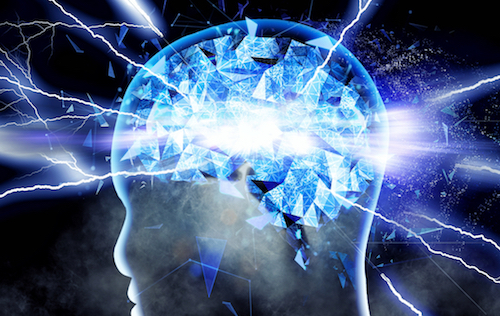Stimulants are proven to be effective in treating ADHD, but diversion from the medications—or use in forms like meth or MDMA—can have dire consequences
By Jason Langendorf
More than six million children in the U.S. were estimated to have been diagnosed with attention-deficit hyperactivity disorder (ADHD), according to a 2016 study from the Centers for Disease Control and Prevention (CDC). That’s nearly one in 10 kids. Among them, almost two in three were treated with medication—usually a prescribed stimulant.
On its face, treating children with a debilitating condition using evidence-based, regulatory-approved medications shouldn’t be considered a bad thing. Now-common synthetic stimulant formulations such as Adderall and Ritalin have been in use for decades, and they tend to work—proven effective in 70% to 80% of children with ADHD. For most kids with ADHD, stimulant-based medications increase dopamine in the brain to help them focus.
The number of Americans prescribed a stimulant in the treatment of a single condition has surged by the millions in recent years. And that has thrown the door open for wider diversion.
Concerns have grown, however, with a rising rate in diagnoses. One study found a 41% increase in ADHD prevalence in U.S. children from 2003 to 2011, while the lifetime prevalence of ADHD was measured at 8.1%. Although the CDC recorded a slight dip in the number of U.S. children diagnosed with ADHD between 2011 and 2016 (from 6.4 million to 6.1 million), it issued the caveat that survey methods had changed and therefore previous estimates were not comparable with new data. Cutting through the statistics, there is a clear takeaway: The number of Americans prescribed a stimulant in the treatment of a single condition has surged by the millions in recent years. And that has thrown the door open for wider diversion.
David Giwerc, president and founder of the ADD Coach Academy and a sitting member on the advisory board for the Attention Deficit Disorder Association (ADDA), cited separate studies in a blog he authored for the American Professional Society of ADHD and Related Disorders (APSARD), noting that diversion rates for prescribed stimulants had reached 61.7% and that stimulant-related emergency department visits had increased threefold in recent years.
“Stimulant diversion, which can range from giving a friend a single pill to selling one’s prescribed pills to others, is on the rise,” Giwerc writes, “and young adults, particularly college students, are the primary source of this increasing and troubling form of prescription medication misuse.”
A Short History of Stimulants
Why the hyperfocus on ADHD medication? After all, a wide variety of stimulants—natural and synthetic, and of varying potency and risk levels—are all around us and within easy reach. Practically every coffee and energy drink and many sodas on the supermarket shelf contain caffeine. Cigarettes and other products with nicotine as an active ingredient can be found just behind the counter at gas stations and liquor stores. Other stimulants, though less ubiquitous, can be surprisingly easy to access and far more dangerous, including:
- Meth
- Cocaine
- MDMA (Molly)
- Amphetamines
- Bath salts
Like most controlled substances, stimulants have largely therapeutic origins. Chemist Gordon Alles, for instance, discovered amphetamines in 1929 while trying to develop an asthma relief drug. After securing a patent, Alles found that while the substance had no effect on congestion, trial users experienced enhanced alertness and heightened blood pressure. Soon the drug was being sold to the public as a cure for narcolepsy, Parkinson’s disease and mild depression. Benzedrine sulfate tablets were widely distributed among American soldiers during World War II, and eventually, servicemen and homemakers alike were receiving regular boosts from “uppers.” By the end of 1945, Benzedrine production had reached a rate that could supply 6.5 million Americans with a daily dose of two tablets, according to a 2021 project at Northwestern College (Iowa), and “the effects of this shift had long-term effects that are still being felt today.”

The normalization of stimulant use meant amphetamines faced less scrutiny and stigmatization during America’s War on Drugs than some other substances, such as marijuana. Even cocaine received something of a free pass from the public, arguably well into the 1980s. Whether the prescription of amphetamine-based medications for the treatment of ADHD becoming standard practice has contributed to stimulants’ level of acceptance is unclear, but we have only recently begun to come to grips with the sometimes-underestimated risks associated with these substances.
The CDC reported in 2019 that nearly one in five overdose deaths involved cocaine, and that psychostimulant overdose deaths had increased by 28% over 2018. At the same time, the agency announced that 2.5 million Americans ages 12 and older reported having used meth—a highly addictive psychostimulant with alarming side effects—in the previous year.
Even ADHD patients who use Adderall as prescribed may experience side effects ranging from agitation to loss of appetite, and some experts have raised concerns about slowed growth and cardiovascular effects in children. And, yes, the medication comes with the potential not only for diversion, but also for addiction. Experts are learning more about the possible links between ADHD and addiction, with one recent study finding that as many as half of young adults with ADHD struggle with substance use.
Treatment Challenges
Not every person who uses stimulants necessarily misuses them, let alone becomes addicted. But in several significant ways, the stakes for people who use stimulants are higher.
In a 2011 feature published in the American Psychological Association’s journal Monitor on Psychology, Sadie F. Dingfelder wrote that, according to research presented at the organization’s annual convention, “stimulant drug abuse packs a triple-whammy to people’s decision-making abilities, hampering their reasoning and increasing impulsive and compulsive behaviors.”
In the study, led by Trevor W. Robbins, a behavioral and clinical neuroscientist at the University of Cambridge in England, four groups of participants—people who chronically used amphetamines, people who used opiates, people with orbitofrontal cortex lesions, and people with dorsolateral or medial prefrontal cortex lesions—played a computer game that tested the speed and accuracy of their decision-making ability. The people who used stimulants made slower, and often wrong, decisions—roughly at a level equivalent to the participants with orbitofrontal cortex damage. And the longer the participants had been using stimulants, the research found, the worse their decision-making was.
Less awareness not only means higher risks for every new generation, but it also translates to less funding for treatment, support and research specifically for stimulants.
“This suggests that, among amphetamine users, their poor decision-making may be associated with orbitofrontal damage and with reduced serotonin function in that region,” Robbins said, “as methamphetamine addicts have been shown to have reduced signs of serotonin function in the orbitofrontal cortex post mortem.”
Essentially, Robbins concluded, the participants who chronically used stimulants had “poisoned their frontal cortex and produced decision-making deficits.”
Meanwhile, treatment options for stimulant use disorder are limited. While opioid use disorder (OUD) and most other SUDs can be treated with both behavioral therapy and medication, there is currently no Food and Drug Administration (FDA)-approved medication-assisted treatment (MAT) for stimulants—no methadone or naltrexone equivalent for, say, meth and cocaine. Although there are innovative treatment alternatives entering the market, people with a stimulant use disorder have no access to approved medications that can ease their cravings and withdrawals. For many, this makes recovery doubly difficult.
And while the opioid crisis creates daily headlines and lights a fire under policymakers, the urgency surrounding the overdoses, addiction and shattered lives associated with stimulant use disorder receives short shrift. Less awareness not only means higher risks for every new generation, but it also translates to less funding for treatment, support and research specifically for stimulants.
Images: Shutterstock














